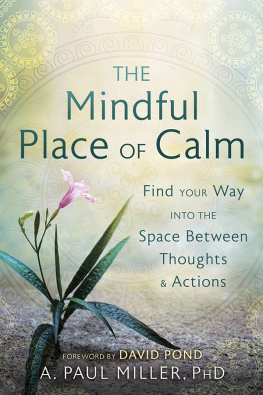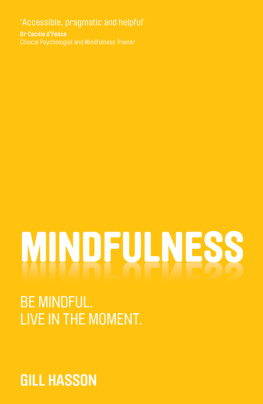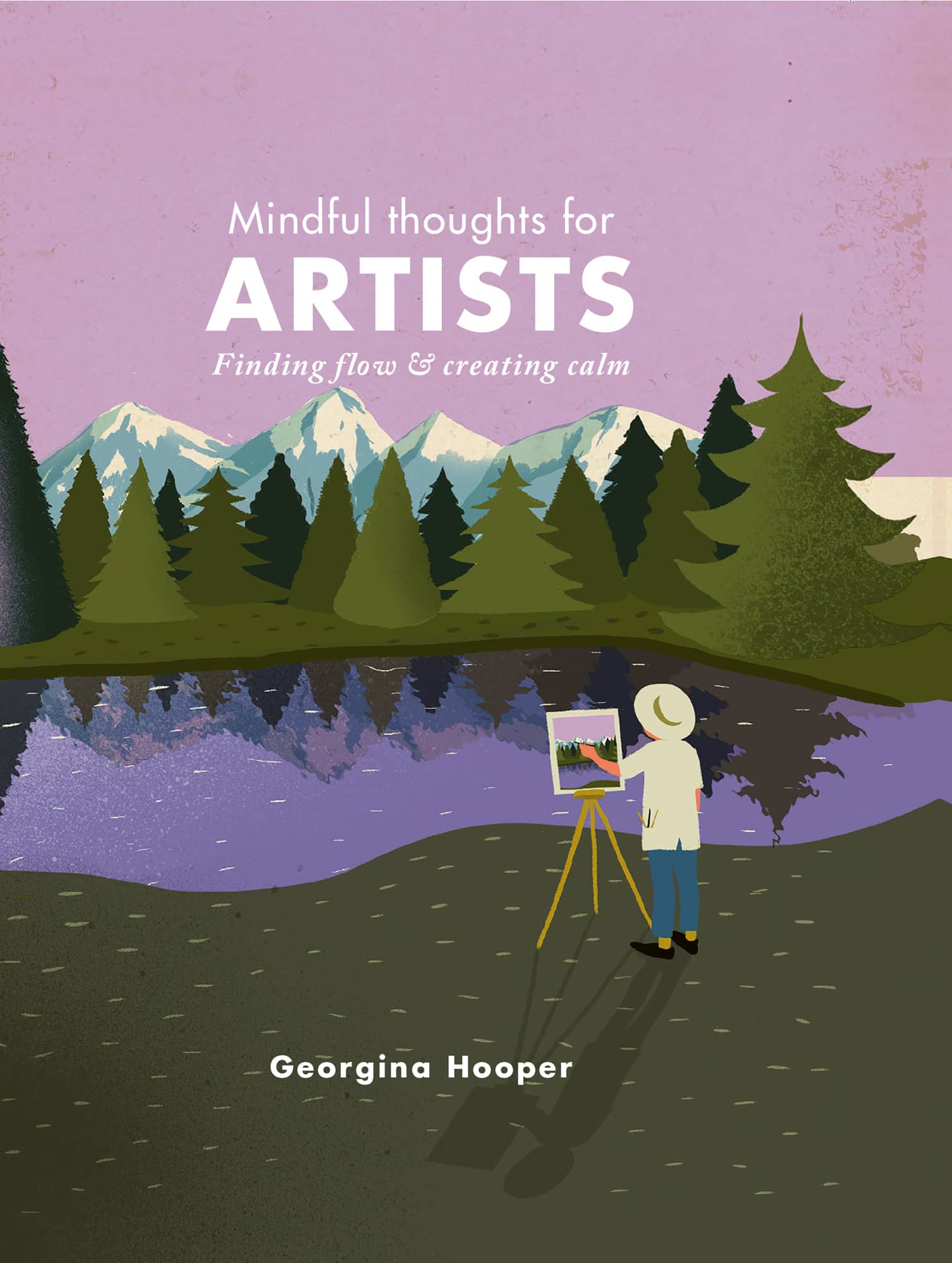Contents
Guide
Mindful thoughts for
ARTISTS
Finding flow & creating calm
Georgina Hooper

INTRODUCTION
The
Creative Path
We live in a time where we need to connect with our creative selves more than ever. The unending stimulation of the modern world can be overwhelming, but it also offers opportunities for creative inspiration if only we can draw breath long enough to soak it up and express what we make of it all. As a society, we seem to be tuning in to the rich benefits that art has to offer us as human beings. A surge of creativity is being embraced the world over, with more people taking up all sorts of art practices for pleasure and wellbeing. In this inherent form of self-expression is a vast array of rewards, and the benefits are richly enhanced when we incorporate mindfulness with our artistic practice.

I had the privilege to learn of mindfulness in artistic practice first-hand as a research scholar in Chinas Tianjin University, where an art professor taught me the philosophy and techniques of Chinese landscape painting using ink on delicate rice paper. As I watched the professor work, I sensed his peaceful focus. The fugitive effects of the medium required him to bring all awareness to the act of making in that moment. Over time, I have cultivated a deeper understanding of this way of working. In this book I share with you the culmination of many years of mindful art practice and academic research, and the personal reflections and understandings that have emerged from this.
Art provides for a mindful practitioner a stimulating focus with which to hone and cultivate inner stillness. Delicately and dexterously manipulating nothing into something requires us to reach somewhere beyond the external world into the inner realm where our imagination thrives. By learning to delve deeper into this space we enrich both our meditation and our art.
The wealth and beauty of making can go unnoticed, be forgotten or diluted if you arent present to experience it in the moment. When we create in a mindful way, we can witness the transformation that our creativity brings. Our minds can open to a more intuitive and playful way of making, leading us to a greater sense of joy. We can connect intimately and compassionately with ourselves and others. By quietening the babble of our conscious mind and letting go of control we can allow our whispered inspirations to be heard and respond to them without fear. Through mindfulness we can rise above the damning inner critic with confidence in our artistic ability.
For many of us, having time to make art can be something of a luxury. When we find these moments, we owe it to ourselves to leave behind day-to-day concerns and to be fully present. When we connect deeply with our craft through mindful awareness, we open ourselves up to the magic of making and the beauty that can be found in the here and now.
Behind the Veil
Consciousness, which is the state of being aware of and responsive to our surroundings, is a natural and healthy part of the human mind. However, living in a climate of perpetual hustle and bustle can present a cacophony of stimuli that bombards our conscious mind, resulting in a never-ending stream of mental babble. In our often constantly changing environment, both virtual and real, we are flooded by information, sounds, sights, ideas, conversations and interactions, and this can be difficult for our sensitive systems to cope with. The activity of the conscious brain can be like a veil of static noise, a constant distracting hum that prevents us from accessing a deeper, more intuitive state of mind and being.

THE CHALLENGE OF SWITCHING OFF
With what seems like an ever-increasing demand on our brains, sometimes we just need to switch off, right? How simple that sounds! But tuning out can be a challenge. Yes, sleep can be a wonderful abyss to dive into, but sometimes we find our brain so stimulated that even sleep becomes unattainable. And when we finally drift into its soft, black velvetiness, the frenzy of our external world may bubble up as fitful dreams.
The excitement of the world around us and a serious fear of missing out can make it difficult to want to step away for even a moment. Anyone who has ever tried to sit and meditate quietly will have found their brain playfully and relentlessly attempting to entice them back into its realm. Many of us find that there is a proverbial party going on in our heads. I like to imagine this party as an intimate yet endless grand circus which we can wander amongst. Mesmerizing and tantalizing, we can be fully engaged spectators and even performers in this internalized world. Led by our imagination, we can dive into a colourful realm of spectacle with an infinite range of players and participants past, present and future.
This metaphorical sparkling realm of thought is no less spectacular than the MRIs of modern science, which reveal our brains neuro circuitry alight like a sky of fireworks. There is just so much going on, and there should be! This is what our beautiful brain does. It is an organ, just like the heart, that is always at work (or play). We cant expect our brain to stop, any more than we would expect our heart to. However, we do not always have to be standing in its very control room or actively participating in its dazzling display. That would just be exhausting!
A QUIET SPACE
In every good circus there is a veiled room or quiet space that you can retreat to. To step behind the veil into such a quiet and at times mysterious place allows us a very different perspective of the circus. Slightly removed, we are less affected by the stimulus that had us so enthralled only a moment ago. From this little distance, we might even see with greater clarity.
Mindfulness through creative practice is such a room. It is a space we can create inside ourselves where we can retreat. The more we retreat to this space, the more we may discover that behind the veil of our conscious thought exists a whole other realm to be explored. What may seem only a small space at first, with practice can become vast and infinite. Behind the veil is the potential for a deeper understanding of ourselves, and also a means to replenish our energy, restore a sense of calm and feed our very souls.
ART AS MEDITATION
Quietening the conscious mind through the approach of art as focused meditation has two main benefits over traditional seated meditation. Firstly, some of us may find it hard to warrant dedicating time each day to seated meditation, particularly when we are so busy. Using creative practice as focused meditation allows us to continue actively doing something while we mentally step away for a while. This fills the need to be productive with our time while making space for meditation.









